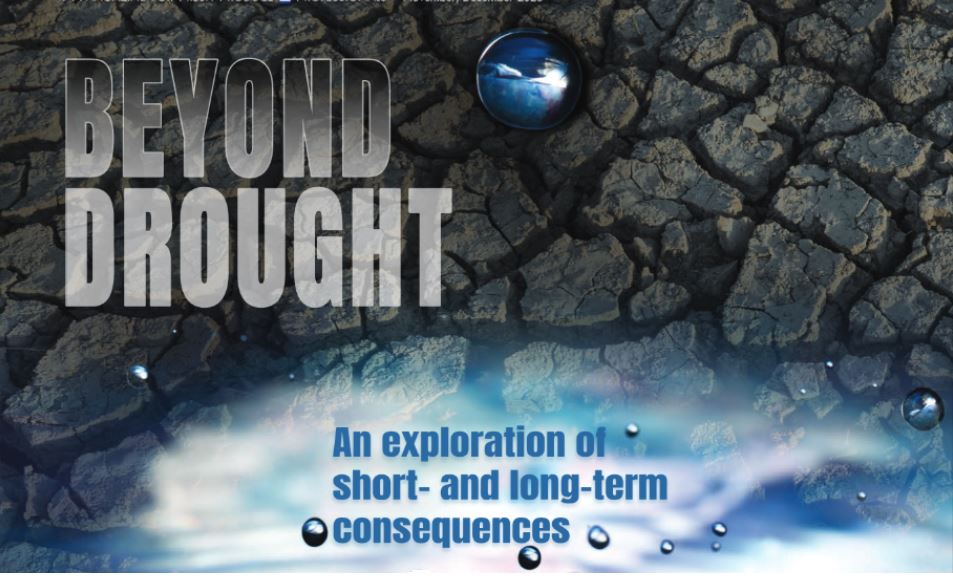It sounds familiar: California agriculture praying for rain after two decades of drought, then getting more—much, much more—than it asked for.
When did this happen before? Starting in December 1861, when a storm of biblical length (43 days) rained down continually on the state.
The next month in the state’s capital, Sacramento, Governor-elect Leland Stanford (later founder of the university bearing his name) had to travel to his inaugural ceremony in a rowboat. The Central Valley turned into an inland sea 300 miles long and 20 miles wide.
The weather phenomenon that caused this disaster is called an atmospheric river.
“An atmospheric river is a narrow conveyor belt of vapor that extends thousands of miles from out at sea, carrying as much water as 15 Mississippi Rivers,” explains an article in Scientific American.
“It strikes as a series of storms that arrive for days or weeks on end. Each storm can dump inches of rain or feet of snow.”
The disaster of the 1860s is all but forgotten, but atmospheric rivers are no fluke on the Pacific Coast of the United States. They occur regularly, with an average of two a year.
Indeed, 31 atmospheric river storms hit California in the 2022-23 season, the Los Angeles Times reported in April. Fortunately, the storms didn’t do nearly the amount of damage as those during the Civil War.
“Smaller atmospheric rivers are not all bad; between 1950 and 2010 they supplied 30 to 50 percent of California’s rain and snow—in the span of about 10 days,” notes Scientific American. “Although these storms deliver much of the West’s precipitation, they also cause most of the region’s flooding, with associated economic damages as high as $1 billion a year.”
Atmospheric rivers aren’t going away on the West Coast, and they form one major component of the vexed water situation in the sunny but therefore arid western parts of the United States.
Marty Ralph, director of the Scripps Institution of Oceanography’s Center for Western Weather and Water Extremes, told the Los Angeles Times that climate change will lead to both larger and stronger atmospheric rivers due to higher levels of water vapor.
“Also in California, particularly, we see that we’re likely to get more of our annual precipitation [from] a few even stronger days, and longer dry periods in between.”
Weathering the Highs and Lows
Ian LeMay, former president of the California Fresh Fruit Association and now president of the California Table Grape Association, BB #:153597, explains, “This year, elements of history are truly repeating: in Kings County, Tulare Lake is reforming, which occurs about every 20 years.”
“The history of the West is drought, floods, and fire,” says John Pandol, director of special projects for Pandol Bros., Inc., BB #:111977 which grows about 2,000 acres of table grapes and other crops in the Delano, CA area.
Jamie Johansson, president of the California Farm Bureau Federation, as quoted in a Western Farm Press article in April, agrees: “Multiyear droughts are not new, occurring 60 percent of the last 100 years in our state’s agriculture.”
“Our average is four low years and one really high year,” Pandol continues, which points up the need to save the excess in wet years.
The huge storms of the 2022-23 season followed three straight years of drought in California (recent drought years were from 2011 to 2017 and 2020 to 2022). As the state entered the fall of 2022, there were many cries of desperation.
In September 2022, practically the whole state was in drought condition—the most extreme being the San Joaquin Valley, the heartland of the state’s fresh fruit and vegetable industry.
The extremes of wet and dry in California and Arizona—key producing areas of fresh fruits and vegetables—have drawn wider attention to the chronic problems faced in these semiarid areas.
In one respect, the climate throughout much of these states is ideal for growing fresh produce: long, hot summers with virtually no chance of rain between May and October. These conditions mean growers can apply exactly as much water as a crop needs, when it needs it.
This means irrigation. “Irrigated crops underpin California’s agricultural dominance,” notes the website of the Public Policy Institute of California (PPIC).
The state’s agricultural sector “produces over 400 commodities, generates more than $50 billion in annual revenue, and employs over 420,000 people. Most farm revenue comes from irrigated crops.
“Irrigated farmland is concentrated in the San Joaquin Valley (54 percent of the state total), the Sacramento Valley (21 percent), the North, Central, and South coasts (9 percent), and the Southeast desert region (6 percent).”
This is an excerpt from the cover story in the November/December 2023 issue of Produce Blueprints Magazine. Click here to read the whole issue.



